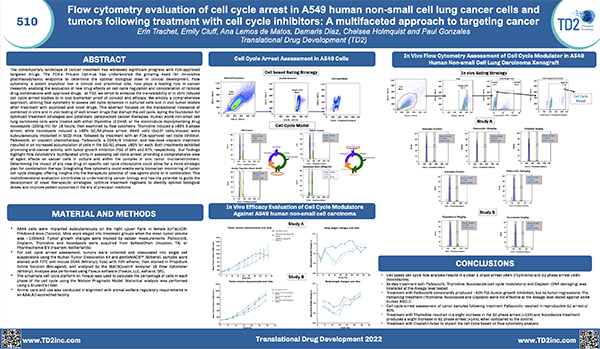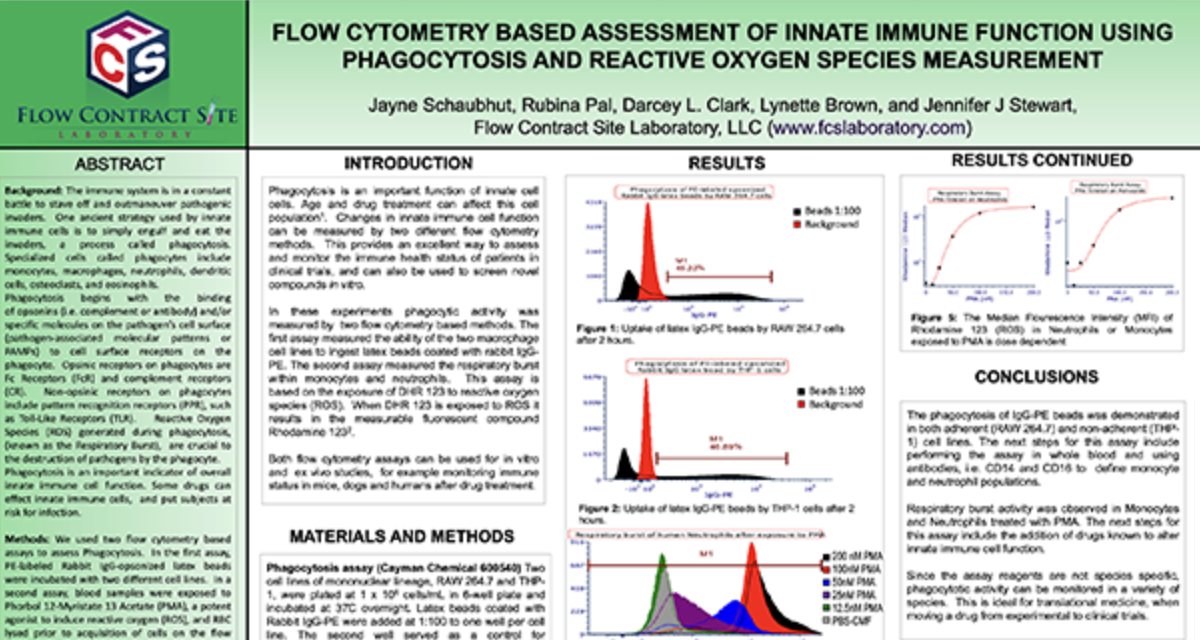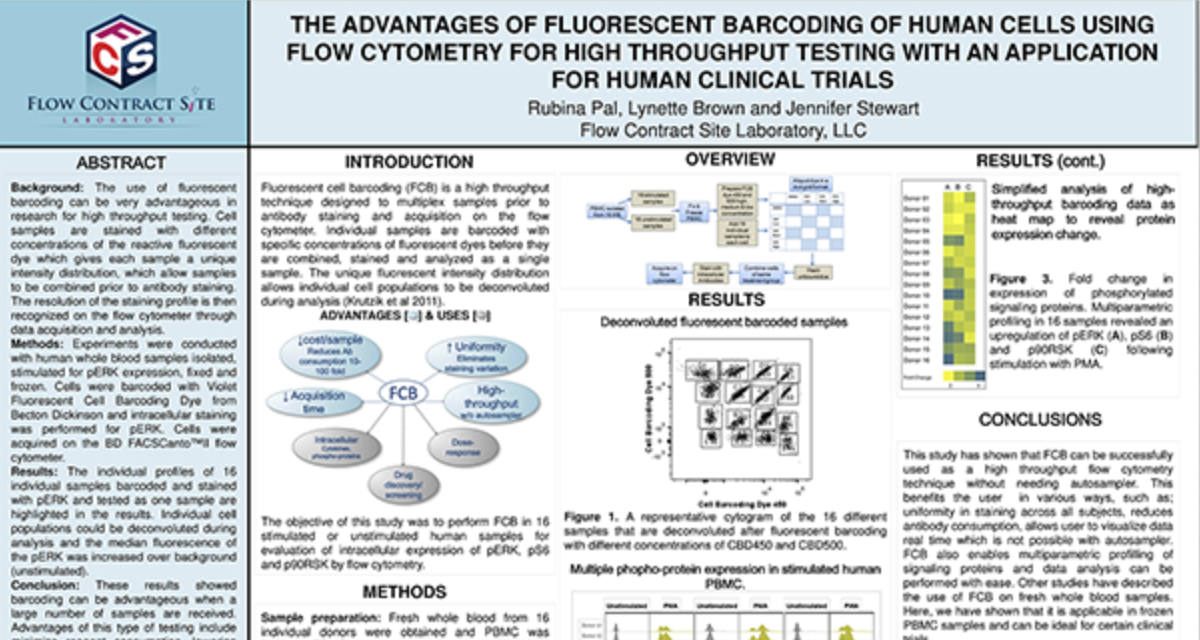Advanced Preclinical Flow Cytometry Analysis Services
Precision Immunophenotyping & Drug Impact Analysis for Oncology Research
Gain a deeper understanding of your drug’s therapeutic effects through high-throughput flow cytometry analysis across a diverse array of assays and cell types. TD2’s cutting-edge platform offers comprehensive immunophenotyping, enabling you to delve into your drug’s mechanism of action and pharmacodynamics, ultimately strengthening the efficacy of your immunotherapy while effectively minimizing unwanted side effects.
View Our Clinical Flow Cytometry Solutions
Features & Benefits:
- In-Depth Analysis: Explore immune composition within vital organs such as tumors, spleen, and lymph nodes, allowing you to tailor treatment strategies for maximum impact.
- Precise Impact Assessment: Evaluate the therapy’s influence on the frequencies and functions of specific cell subsets, optimizing its performance.
- Expert Guidance: Access our dedicated FACS team’s expertise to customize protocols, panel configurations, gating strategies, and more, ensuring the most relevant results for your study.
- Efficient High-Throughput: Characterize cells with ease, using minimal sample volumes, thanks to our advanced equipment, including Miltenyi gentleMACS™ Octo Dissociator, MultiMACS Cell24 Separator, Miltenyi MACSQuant Analyzer 16, BD FACSCanto™, BD FACSCanto™ II, 10-color BD FACSCanto, Cytek Aurora, and Millipore Guava PCA
With TD2’s flow cytometry platform, you can confidently navigate the complexities of immune phenotyping and rare cell populations, gaining valuable insights into your drug’s potential and optimizing its therapeutic impact
Request more information about our Flow Cytometry Services
Contact our experts to help advance your drug development with TD2's trusted Flow Cytometry Services.
Capabilities and Assays Include:
![]() Tissue Dissociation/Single-Cell Suspension
Tissue Dissociation/Single-Cell Suspension
- Spleen, Tumors, Lymph nodes
![]() Primary Cell Isolation
Primary Cell Isolation
- Pan T cells isolation kit, mouse
- CD4+ T cell isolation kit, mouse
- isolation of untouched mouse cells from single-cell suspensions from spleen
![]() Immune Population Phenotypingx
Immune Population Phenotypingx
- Panel design 20+ colors
- Whole blood, bone marrow, spleen, and tumor
- Viability dye inclusion
- Surface staining
- Intracellular staining, including:
- Cytoplasmic proteins
- Phospo-proteins (specific buffer set)
- Nuclear transcription factors (specific buffer set)
- Cytokines (specific buffer set)
- T-lymphocyte, B-lymphocyte and Natural Killer cells (TBNK)
- T Regulatory Cells
- T Memory, Naive and Effector Cells
- T Cell Activation
- B Memory and Plasma cells
- Humanized mice panels
- Custom panels
- CAP TBNK Panel
![]() Cancer Cells/Tumor Specific Marker Expressionx
Cancer Cells/Tumor Specific Marker Expressionx
- Viability dye inclusion
- Cell lines and single-cell suspension tumors
- Surface staining
![]() Fluorescent Proteins Expressionx
Fluorescent Proteins Expressionx
- Viability dye inclusion
- Cell lines and transfected primary cells
- Surface staining
![]() Cell Cycle Analysisx
Cell Cycle Analysisx
- Propidium iodide
- Cell lines
- Solid tumors (under development)
![]() Intracellular Protein Analysisx
Intracellular Protein Analysisx
- Intracellular Cytokines
- Phosphorylated Proteins
- NK Cell Function
- Basophil Activation Test (BAT)
Markers and Panels Available
Human Immunophenotyping Panels
Integrated Platform for Nonclinical and Clinical Drug Development
- We can test a variety of species including human, NHP, rodent, dog, equine; and for a variety of specimen types including whole blood, PBMC, bone marrow, spleen, lymph node, cell lines.
- Any of the markers/panels can be performed as non-GLP testing. A qualification may be
performed to determine color combinations.

Model Species Immunopheotyping Panels

- We can test a variety of species including human, NHP, rodent, dog, equine; and for a variety of specimen types including whole blood, PBMC, bone marrow, spleen, lymph node, cell lines.
- Any of the markers/panels can be performed as non-GLP testing. A qualification may be performed to determine color combinations.
* Additional panels can be validated to meet your GLP needs
FACS Panels – Mouse Lymphoid Lineage Panels

FACS Panels – Mouse Lymphoid Lineage Panels (under development)

FACS Panels – Mouse Myeloid Lineage Panel

FACS Panels – Mouse Myeloid Lineage Panel (under development)

FACS Panels – Human Lymphoid Lineage Panels (under development)

![]()
PRECLINICAL
Models and Services
TD2’s service offering is consistently expanding and currently includes:
Model Systems:
- Syngeneic Tumor Models
- Orthotopic Tumor Models
- Patient-derived tumor xenograft models (GBM)
- Humanized Mouse Models
- Diet-Induced Obesity Tumor Model
- Adoptive Cell Therapy Models
- Cell Line Derived Xenografts Models (CDX)
Bioanalytical Services:
- Flow Cytometry
- Metabolomics and Proteomics Analysis
- DMPK/ADME services
- Non-GLP Safety/Tolerability
In vivo and In vitro Characterization
- In vitro Pharmacology Assays
- In vivo Optical Imaging
- Efficacy Evaluation
Therapeutic Evaluation:
- Antibody Drug Conjugate (ADC)
- Small Molecule
- Cell Therapy
- Checkpoint Inhibitors
- mAbs
- Vaccines
- Gene Therapy

PK, PD AND BIOMARKERS
Everything needed for successful drug development.
Combining early PK with POC efficacy studies, we provide alignment of compound kinetics from in vitro metabolism through PD and PK testing. TD2 offers Proof of Concept (POC) for both small and large molecules of interest and provides support in the following areas:
- Pharmacokinetic noncompartmental analysis using Phoenix WinNonlin software
- Tissue distribution
- Analysis of large molecules
- Dried Blood Spot (DBS) analysis
- LC-MS/MS and UV-VIS dose confirmation, in support of dose escalation studies
![]()
A Complete DMPK laboratory to support your assay needs.
When you partner with TD2, you can be confident that your sample analyses and results are highly reproducible and accurate. We can help tailor your DMPK panel to meet your therapeutic candidate’s requirements. Our DMPK laboratory, located within our AAALAC-accredited, state-of-the-art vivarium, is the ideal environment for cancer drug discovery to properly assesses quantitative pharmacokinetic testing and toxicokinetic analyses.
We provide bioanalytical method development and/or transfer under a non-GLP environment with proper evaluation based on FDA guidance.
Our instrumentation includes one of the most highly sensitive LC-MS/MS equipment available, the Waters Xevo TQ-S and Acquity I-class UPLC system.
Other DMPK services we support:
- Physiochemical properties including chemical stability
- Stability in hepatic fractions, such as S9, microsomes and hepatocytes
- CYP inhibition using microsomes or recombinant enzymes (supersomes)
- High throughput screening for CYP inhibition
- Plasma stability
- Phenotyping in CYP or UGT enzymes
- PAMPA screening for permeability assessment
- Protein binding including tissue binding, blood-to-plasma ratio, and plasma protein binding
- Bioanalytical method development and validation
PK, PD AND BIOMARKERS
Advanced biomarker assays and analytical readouts.
Trust your research with a team of oncology experts that keep the end goal in mind. TD2 helps advance screening studies by offering various specialty assays from tumor immune cell infiltrate profiling to quantitation of the effect of therapy on the microbiome. In addition, access a wide range of standard applications through the cutting-edge MesoScale Discovery platform including:
- Cytokines and chemokines
- Cell signaling pathways
- Angiogenesis and hypoxia markers
- Growth and vascular factors
- Metabolic markers
- Cell based assays
- Phosphoprotein analyses

Additional Resources
GET STARTED
Work with a team who believes in your research as much as you do.
Are you ready to start your Flow Cytometry studies? Partner with a collaborative oncology CRO that believes in your treatment as much as you do. Take the first step today and contact our experts.
![]() Receptor Occupancy
Receptor Occupancy
Binding of fluorophore labeled “drug” in relation to decreasing dose of unlabeled “drug”

![]() Receptor Occupancy
Receptor Occupancy
![]() PBMC Services
PBMC Services
Evaluate responses of PBMCs by profiling the function/phenotype of subpopulations

![]() Immune Population Phenotyping
Immune Population Phenotyping
Immune cell population analysis of subcutaneous CT26 murine colon carcinoma tumors
CT26 SC tumors: Gating strategy T cells and NK cells.
Gating involved identifying the total cell population, and then gate out the doublets, gate out the dead cells, move on to our first marker CD45 which gates out any non-immune cells. The bottom right cytogram shows the different NK cell populations. The far left middle cytogram depicts the two T cell population CD4+ and CD8+. Values are % of total CD45+ cells.

![]() Cancer Cells/Tumor Specific Marker Expression
Cancer Cells/Tumor Specific Marker Expression
Cancer cells/tumors specific markers expression
- Viability dye inclusion
- Cell lines and single-cell suspension tumors
- Surface staining

![]() Fluorescent Proteins Expression
Fluorescent Proteins Expression
Fluorescent proteins expression
- Viability dye inclusion
- Cell lines and transfected primary cells
- Surface staining

![]() Cell Cycle Analysis
Cell Cycle Analysis
Cell cycle analysis A549 cells
- Propidium iodide
- Cell lines

![]() Intracellular Protein Analysis
Intracellular Protein Analysis
- Intracellular Cytokines
- Phosphorylated Proteins
- T-Regs
- Phosphoroteins
- Cytokines

![]() Cellular Functional Assays
Cellular Functional Assays
- NK Cell Function
- Basophil Activation Test (BAT)


















